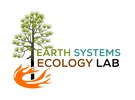|
The explosive nature of the vegetation currently burning in the California wildfires is a direct result of high temperature and a prolonged period with no rain. Vegetation, or fuel as it is often referred to in fire science, contains water. Water has a high specific heat, which is the amount of energy required to raise an amount water by one degree Celsius. In the case of water it is 4.186 joules of energy per gram of water. To get vegetation to burn you need enough heat to boil off the water in the vegetation first. It takes 540 kcal to boil a kilogram of water. This is precisely why if you try and start a campfire with wet wood, you are going to be cold.
In the shrub or chaparral ecosystems that are currently burning in southern California, fuel moisture after the winter rainy season is over 100%. That means that for every kilogram of shrub there is a kilogram or more of water. This year, Chamise, a common shrub in southern California, peaked at 120% fuel moisture and is currently at 60% fuel moisture. This means half as much energy is required to get the shrubs to burn now as was required back in early June. When you are trying to light a campfire, the best thing to do is to get your head down near the base and blow. This increases the amount of air and oxygen moving past the flame. A little flicker, some well place blowing, and viola, you’ve got a nice campfire. Now add Santa Ana winds to already dry fuel and an ignition source and the result is explosive fire conditions. As vegetation burns and generates heat, it pre-heats the vegetation in front of it, causing the water to boil off before the flame reaches the vegetation. This preconditions the vegetation to burn, similar to seasoning your fire wood. How climate change makes it worse Climate change is causing higher temperatures, both during the day and at night. When the atmosphere is warmer, it can hold more water. This causes ecosystems to dry out as water in the ecosystem evaporates and plants release more water as they photosynthesize. As a result, higher temperatures alone are enough to dry out vegetation. Next we add the longer dry season in California. The length of time between when the winter rains in one year stop and the rains the next year start has been increasing with ongoing climate change. These two factors, higher temperatures and a longer dry season, increase the length of time each year that these ecosystems are available to burn. The longer it has been since the last rain event, the drier the vegetation. This prolong dry period and drier vegetation during the Santa Ana wind period causes explosive fire growth during high wind events.
0 Comments
Your comment will be posted after it is approved.
Leave a Reply. |
Details
Archives
October 2023
Categories
All
|

 RSS Feed
RSS Feed